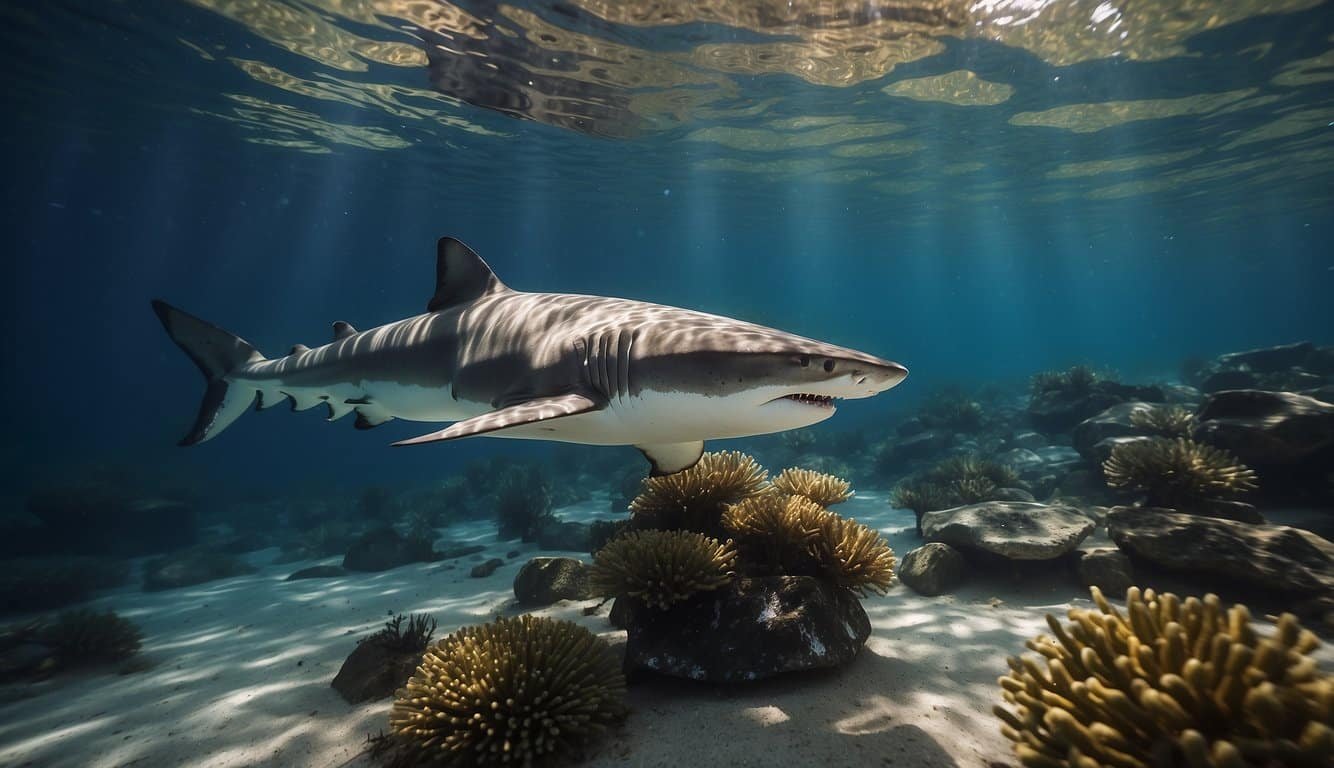Shark Adaptability to Freshwater Environments
Sharks are often thought of as exclusively marine animals, yet some species display remarkable adaptability to freshwater environments. The most well-known among these is the bull shark, which can navigate both salt and fresh waters with ease. How do these creatures manage this impressive feat? It largely comes down to their exceptional osmoregulation abilities.
Osmoregulation is the process by which an organism balances the salt and water concentration in its body. For most sharks, maintaining this balance in the ocean’s salty waters involves retaining urea in their tissues. However, when venturing into freshwater, where the salt content is significantly lower, they face the challenge of osmotic pressure — the force that drives water into their bodies, potentially diluting their internal salt concentration to dangerous levels.
To counteract this, freshwater sharks actively reduce urea levels to prevent water overload and adjust their kidney and liver functions accordingly. The bull sharks are particularly adept at this, modifying their renal function to excrete or retain water as needed. Another species, the northern river shark (Glyphis garricki), along with its fellow genus members, the so-called river sharks, are also found in fresh waters of Australia and Southeast Asia.
While not as widespread as their saltwater counterparts, these freshwater sharks showcase an astonishing adaptation to environments with varying levels of salinity. Their ability to thrive in both freshwater and saltwater demonstrates the incredible versatility and resilience of the shark family, as they continue to navigate diverse aquatic landscapes.
Shark Distribution and Habitats in Freshwater

While sharks are often associated with the vastness of the ocean, some species can navigate and survive in freshwater environments. Among these, the Ganges shark is a prime example, primarily found in the river systems of India. This species has adapted to live in the turbid waters of the Ganges River and is rarely sighted, making it one of the more mysterious members of the shark family.
On the other side of the world, Australia’s speartooth shark roams the rivers and estuaries of the northern region. It’s a shark comfortable in both salt and fresh water, skilled at navigating the murky river mouths and brackish waters where many river systems meet the sea.
Sharks in lakes? You bet! Lake Nicaragua famously boasts its own population of bull sharks, which have been known to leap up the rapids, salmon-style, to reach the lake from the Caribbean Sea.
Though less common, shark species such as the bull shark have been seen navigating the long stretches of the Amazon and even the Mississippi River, astonishingly far from their marine homes.
Freshwater habitats are critical for these animals, yet they face challenges. Pollution, habitat disruption, and changes in water quality can have significant impacts on their survival and distribution, reminding us of the delicate balance between these apex predators and their environments.
Shark Behaviors and Interactions in Freshwater

Sharks demonstrate diverse behaviors when they venture into freshwater environments. While many are strictly marine animals, certain species like the bull shark have adapted to traverse both saltwater and freshwater, leading to unique interactions within these habitats.
Feeding and Diet
In freshwater, sharks like the bull shark adjust their diet to the available prey, which commonly includes bony fish and even birds. They remain opportunistic predators and switch from their usual marine diet to whatever freshwater species are abundant. These could range from salmon during migration seasons to local species of fish found throughout rivers and lakes.
Reproduction and Lifespan
Shark reproduction in freshwater remains a less common phenomenon. Most species of sharks are not known to reproduce in freshwater habitats, preferring the marine environment for the safety and abundance it provides for their offspring. Nevertheless, the bull shark is known to migrate into freshwater to give birth, providing their young with a predator-reduced sanctuary—a strategy that may contribute to their relatively long lifespan.
Human and Shark Encounters
Interactions between humans and sharks in freshwater are rare but can be significant when they do occur. Bull sharks, known for their capacity to swim upstream into freshwater rivers, have been known to be aggressive and may pose a danger during such encounters. While attacks on humans are not common, the risk increases if sharks associate humans with food due to improper fishing or feeding practices. It is vital for local water users to be aware of the potential presence of sharks and to follow safety guidelines to minimize danger.

